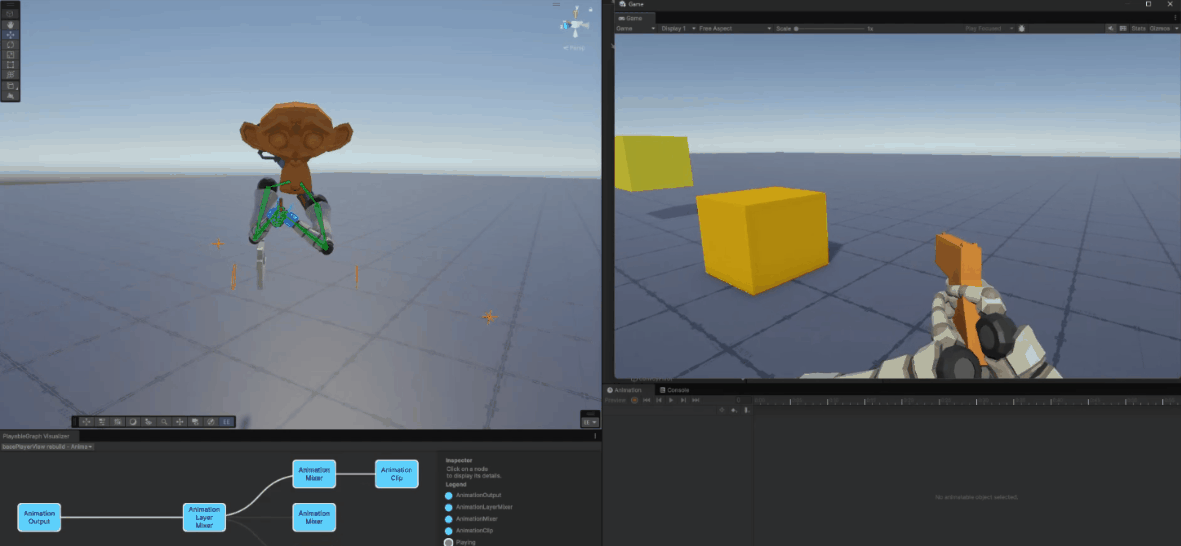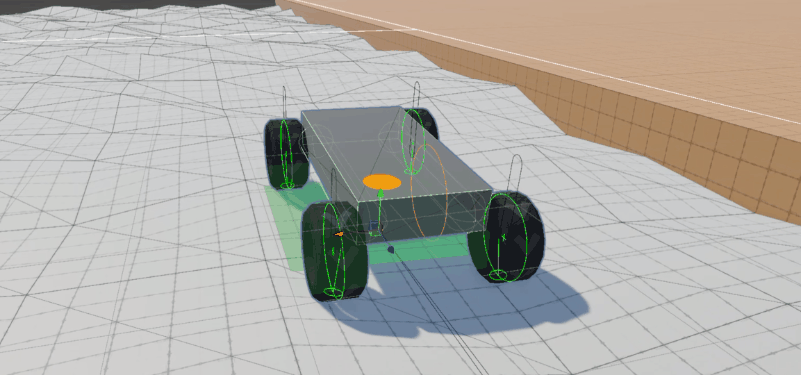I’m a technical game designer and gameplay programmer with over 16 years of industry experience touching on design, code and art.
Along the way I’ve worked on some of the biggest franchises in the world, and with some of the most beloved indie-darlings.
I love collaborating to solve technical problems, improve balance and game-feel, and build out new mechanics and systems that contribute to the big picture.
INDUSTRY EXPERIENCE
TRIBAND
Responsible for gameplay design, systems & gameplay programming, and performance optimization in Unity (C#.)
WHAT THE CAR was the next step for Triband’s WHAT THE- universe, and a massive step up from WHAT THE GOLF in terms of scope and complexity.
We were aiming for the same breadth of content, but with much more elaborate playable characters, as well as support for fully “remixable” player generated levels.
During production I created several benchmark playable characters, as well as a large number of supporting systems & designer-facing tools. I also pitched, designed and built their first major episodic release, “Sand Storm”.
PLAYDEAD
Gameplay Designer responsible for prototyping new game mechanics and systems, creating puzzles with supporting logic and layouts, and building open-world POIs with a focus on interactivity, physics, and seamless discoverability. Working in both Unity (C#) and Unreal (C++ / Blueprints).
Game 3 is an incredibly ambitious project, even for a studio with Playdead’s pedigree. My time there straddled an engine-shift, and was a really engaging balance of adapting their ethos to those new ambitions (and newly liberated camera), while also trying to help define how that ethos was going to evolve.
Working within the studio’s aesthetic also meant working without the common hand-holds of UI, explanatory dialogue, or explicit tutorials. Even a minor mechanical sketch had to show that it could be completely intuitive, while fitting the logic of the world and contributing to the whole.
UBISOFT
Level Designer on Splinter Cell: Blacklist & Watch Dogs 2, stealth action titles with a heavy emphasis on systemic gameplay. I was responsible for layout & encounter design, scripting AI behaviours and special gameplay sequences, as well as overall balance & technical polish.
I later transitioned into a game design role on Watch Dogs Legion, where I was responsible for systems & mechanic design during pre-production.
Ubisoft Toronto was a much larger & more diverse studio than Rockstar, and during my time there I became much more active in my own development. Forming relationships there across departments really helped me to accelerate my growth as a generalist, as I started to reach further into technical art and gameplay programming.
ROCKSTAR
Level Artist & VFX Artist. I was initially responsible for creating environment art, but on my own initiative I lead a new focus on destructibility, first with an approach to prop creation, and then later by integrating some newly available physics simulations into our production pipeline.
The feeling of finding some untapped value, and of having something go from a side-interest to official work, as a new-comer in the industry was incredibly rewarding, and I soon transitioned to a mixed role creating complex physics simulations and integrating them both into in-game cutscenes and gameplay sequences.
Branching out from level art also meant I was suddenly interfacing with almost every department at our studio, from programmers to audio engineers, and the experience definitely informed my desire to stay broadly interested and collaborative across disciplines moving forward.
PERSONAL PROJECTS
BLADES OF GRASS
A few years back at The Toronto Game Jam, some friends and I wondered aloud: “… could we make… a local-multiplayer stealth-combat game?”
“… on one screen… ?”
“… because we don't know how to use two… ?”
We were batting around an idea for a game where each player's position was hidden, but discoverable, and landed on a dynamic centered around having to signal your own position to yourself against the background of a "noisy" world, while trying to intercept and track your opponent's signal.
BOG was the result.
GRAVITY BOOTS
An experiment in physics-based character movement.
I've been thrusting some different character controllers into strange environments, and had been curious to see what climbing around in a zero-gravity debris field would be like in third-person.
A colleague wondered aloud if it wouldn’t be more intuitive to imagine it instead in first-person, where you “just climb with your feet”, and the challenges that fell out of the rest of our chat sounded really interesting.
POSE-TO-POSE ANIMATOR
A package that builds off of Unity’s Animation Rigging to support creating procedural animation entirely in-editor. It includes:
An editor tool for authoring and previewing layered animations at edit-time, with a workflow similar to Blender’s NLA Editor.
A custom animation system driven by simple poses, which allows a designer to quickly block-in motion for new gameplay ingredients.
Custom rigging constraints with designer-facing parameters for quickly adding “feel” (using 2nd-order motion, layered noise, etc.)
VEHICLE CROWD PHYSICS
A package that builds off of Unity’s Burst Compiler and Jobs System to simulate the tire-dynamics and other physics for a large number of on-screen vehicles. Includes:
Designer-facing parameters to create and tune new vehicles quickly and intuitively.
An endless procedural terrain generator for stress-testing large crowds of vehicles driving together on irregular ground.
Behaviour Tree nodes that can be used interchangeably between different vehicles to auther new driving patterns.
EMPLOYMENT HISTORY
GAMEPLAY PROGRAMMER
2024 - 2025
GAMEPLAY & SYSTEMS PROGRAMMER / DESIGNER
2021 - 2024
GAMEPLAY DESIGNER
2018 - 2021
TECHNICAL DESIGNER
2017 - 2018
GAME DESIGNER / LEVEL DESIGNER
2010 - 2016
LEVEL & VISUAL EFFECTS ARTIST / SCRIPTER
2008 - 2010














